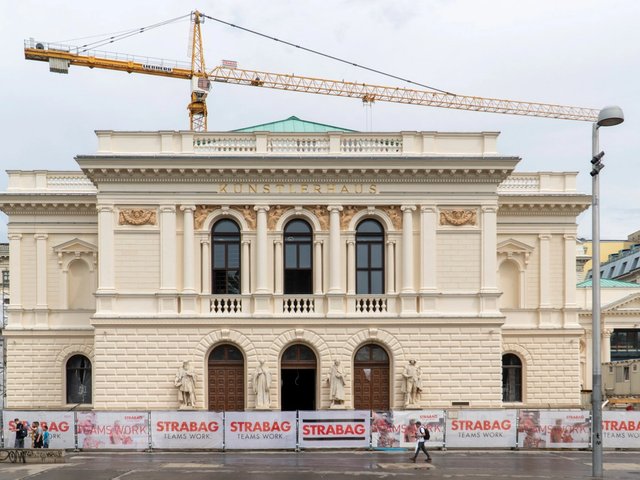The show of the season in Vienna is a survey of some 30 landscapes by Gustav Klimt (until 23 February, see What’s On, p.25). The Oesterreichische Galerie Belvedere is presenting it as the first exhibition devoted to Klimt’s work in this field—half of his paintings were landscapes—which, its curator contends, are his best paintings for their “colouristic brilliance” and “omnipresent sensuousness”.
What the Austrians are not saying is that this was not intended to be—nor is it—the first such Klimt landscape survey. The exhibition began as a collaboration between the Belvedere and the Clark Institute in Williamstown Massachusetts last summer. Years of joint planning went into the show, and the Belvedere’s curator, Stefan Koja, spent months in Williamstown preparing the exhibition, which was to have included three paintings from the Belvedere.
Only days before the opening, the Clark heard from Vienna that the loans from the Austrian gallery would not be coming to Williamstown. Condition problems was the official explanation. But despite assurances and legal guarantees from the Clark that seizure was out of the question, insiders said that there was simply too great an apprehension that the paintings might be seized now that a court in Los Angeles had agreed to hear arguments for the restitution of the Bloch-Bauer Klimts currently in the Belvedere (The Art Newspaper No.125, May 2002, p.22) .
But loans go in both directions. After the Austrian gallery pulled its pictures from the show, the New York dealer Jane Kallir pulled hers, the 1901 “Insel am Attersee,” which, to the Belvedere's chagrin, remains on the cover of the English-language catalogue and on the English-language poster. The Belvedere is now faulting Ms Kallir for creating a gap in its exhibition, but she says that her loan was always contingent on the Belvedere lending to the Clark.
For its German-language poster, the Belvedere has substituted “Am Attersee,” a similar 1901 painting that it has borrowed from Rudolf Leopold (above), the Austrian collector and museum benefactor with his own long-standing troubles over Nazi-era art seizures in the US.
Optimists view the Klimt show in Vienna as a more complete exhibition than the one in the US, largely because the Belvedere has searched through Austrian private collections for previously unexhibited Klimt landscapes.
Pessimists, who years ago predicted that restitution issues would have a “chilling effect” on international loan shows, say their fears have been realised. A long-time observer of Austrian-US relations disagrees: “The Clark case is merely an example of a museum and Cultural Ministry taking revenge in response to a lawsuit in the US. A chilling effect is broad and sweeping. This one is tit for tat.”
MAK goes for Flak called CAT
As Austrian chilling effects go, it is hard to match the sheer scale of a “new” venue, the Contemporary Art Tower (CAT) the former Wachturm or anti-aircraft tower constructed by the Nazis in 1942 that has now been taken over by the Museum for Applied Art or MAK. There are six of these colossi in Vienna, one of which stands just north of the new Museumquartier. Each measures 50 x 50 x 50 metres of near solid reinforced concrete, topped with circular bases for anti-aircraft batteries. The Russians dynamited identical structures in Berlin when they took the city (and their contents, which included quite a lot of art) before anything like a preservationist movement supported keeping them.
In Vienna, the flaktowers (as they are now called) were not saved by any spirit of preservation. Officials thought that demolition would damage too much around them, so the structures stayed, staggering in their juxtaposition to anything nearby. Christo suggested wrapping them 15 years ago, and was rebuffed.
Peter Noever, the MAK’s director, said their legal status is vague; no one knows exactly who owns them. “They have to stay in the landscape of the city because it is part of the story,” he said, conceding that, given their history, “there are limits to what you can do here.”
Now one tower in a park west of the MAK is re-christened CAT, and has been occupied at MAK’s invitation by Biennale frequent flyers such as James Turrell, and Jenny Holzer, who is projecting “THE FUTURE IS STUPID” on the side of one of the hulks. To be fair, few artists can match the historical weight of such a monument. It makes you wonder whether housing contemporary art—or this contemporary art—is the proper use for such a construction, which evokes horrific and inescapable memories quite effectively by itself, and on an inescapable scale.
For better or worse, the MAK, in search of an audience, has built an art schedule called “Heaven’s Gift” into the tower. No one seems to mind, says Mr Noever. Next stop, Jeff Koons on the misunderstood Albert Speer?


